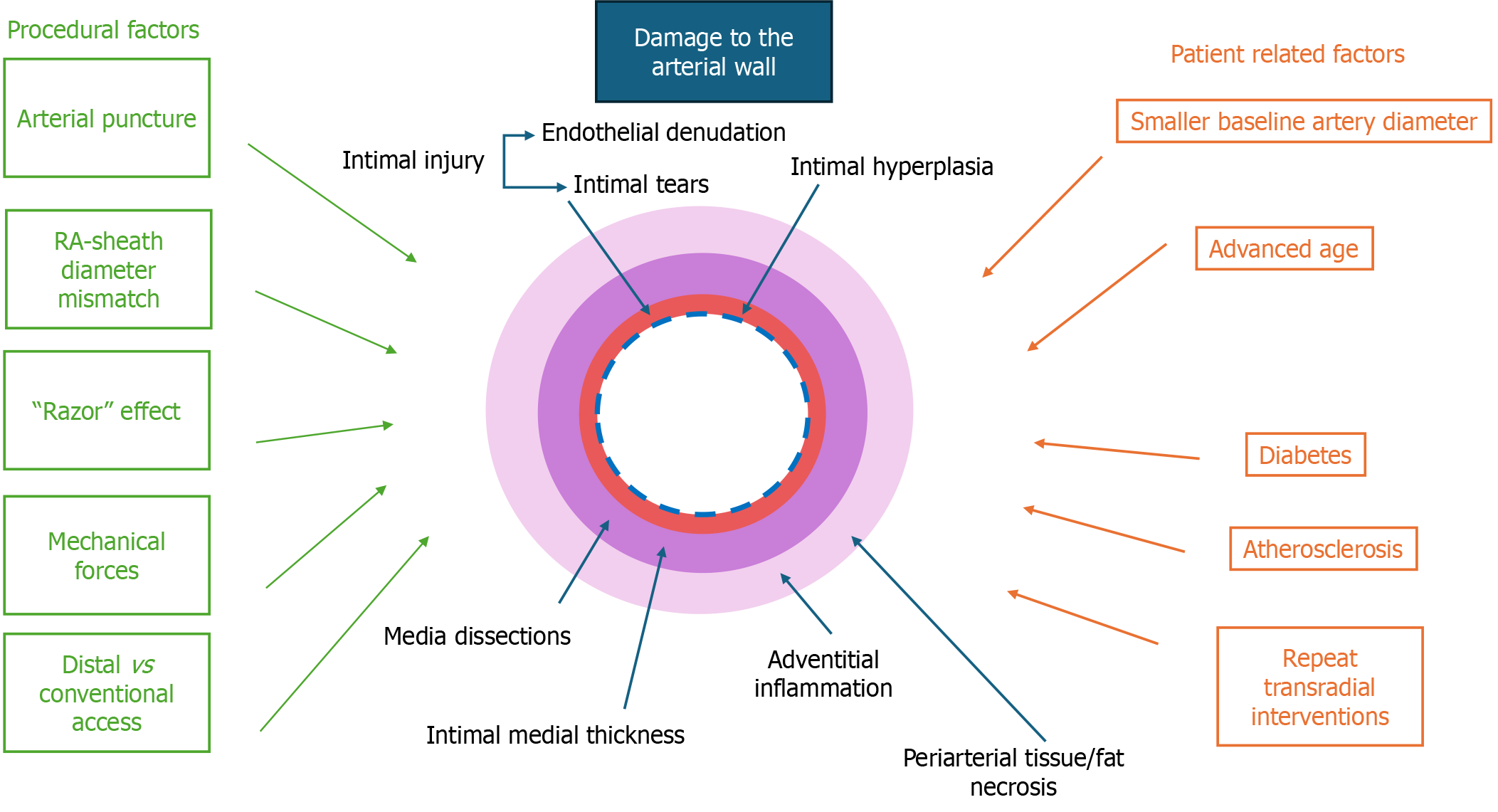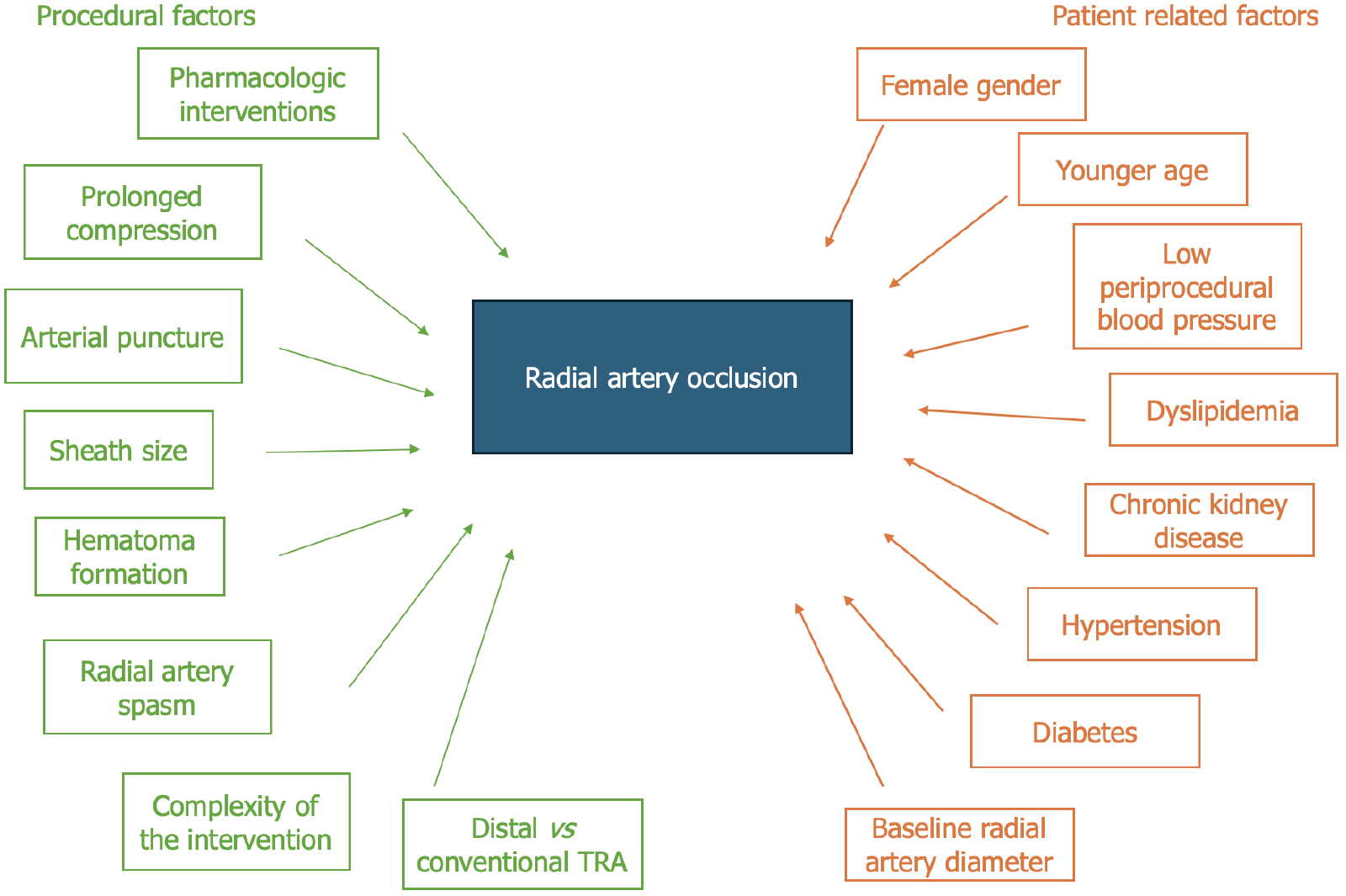Copyright
©The Author(s) 2025.
World J Cardiol. Jul 26, 2025; 17(7): 107772
Published online Jul 26, 2025. doi: 10.4330/wjc.v17.i7.107772
Published online Jul 26, 2025. doi: 10.4330/wjc.v17.i7.107772
Figure 1 Mechanisms and factors contributing to radial artery wall damage following transradial access.
Schematic representation of the factors contributing to arterial wall damage following transradial access (TRA). Procedural factors (green) such as arterial puncture, sheath diameter mismatch, mechanical forces and choice of access site (distal vs conventional) contribute to intimal injury and hyperplasia, medial dissections, intimal-medial thickening and adventitial injury. Patient-related factors (orange), including smaller baseline artery diameter, advanced age, diabetes, atherosclerosis and repeat TRA interventions, further exacerbate arterial remodeling. These structural changes may not only impact long-term vascular integrity but also have implications for the radial artery’s suitability as a conduit for coronary artery bypass grafting.
Figure 2 Procedural and patient-related factors associated with radial occlusion artery after transradial access.
Schematic representation of the factors contributing to radial occlusion artery (RAO) following transradial access (TRA). Procedural factors (green), including periprocedural pharmacologic interventions, prolonged compression, multiple arterial punctures, sheath size, hematoma formation, radial artery spasm, procedural complexity and choice of access site (distal vs conventional) impact the incidence of RAO. Patient-related factors (orange), such as female sex, younger age, low periprocedural blood pressure, dyslipidemia, chronic kidney disease, hypertension, diabetes, and baseline radial artery diameter, further predispose individuals to RAO. Understanding these factors is crucial for optimizing strategies to minimize RAO risk and preserve radial artery integrity. TRA: Transradial access.
- Citation: Sakellariou XM, Nikas DΝ, Papanagiotou P, Liberopoulos E, Florentin M, Bechlioulis A, Mastoridou EM, Kolettis TM. Structural radial artery modifications following transradial access: Mechanisms, clinical implications, and preventive strategies. World J Cardiol 2025; 17(7): 107772
- URL: https://www.wjgnet.com/1949-8462/full/v17/i7/107772.htm
- DOI: https://dx.doi.org/10.4330/wjc.v17.i7.107772














